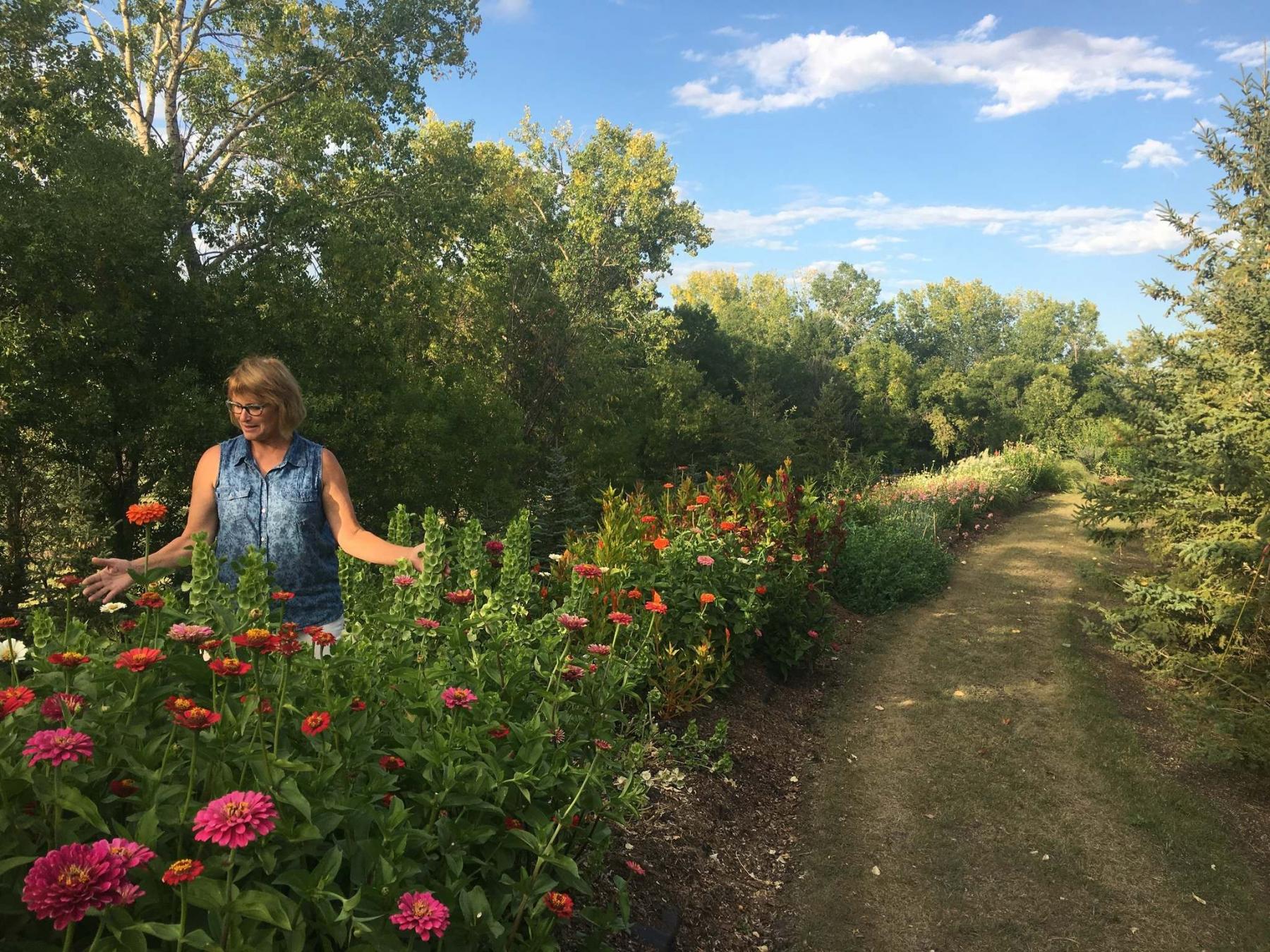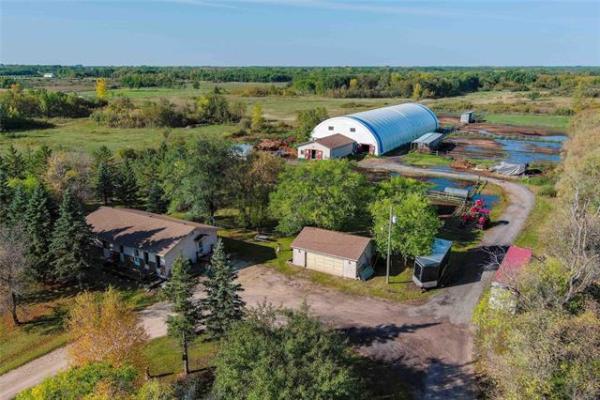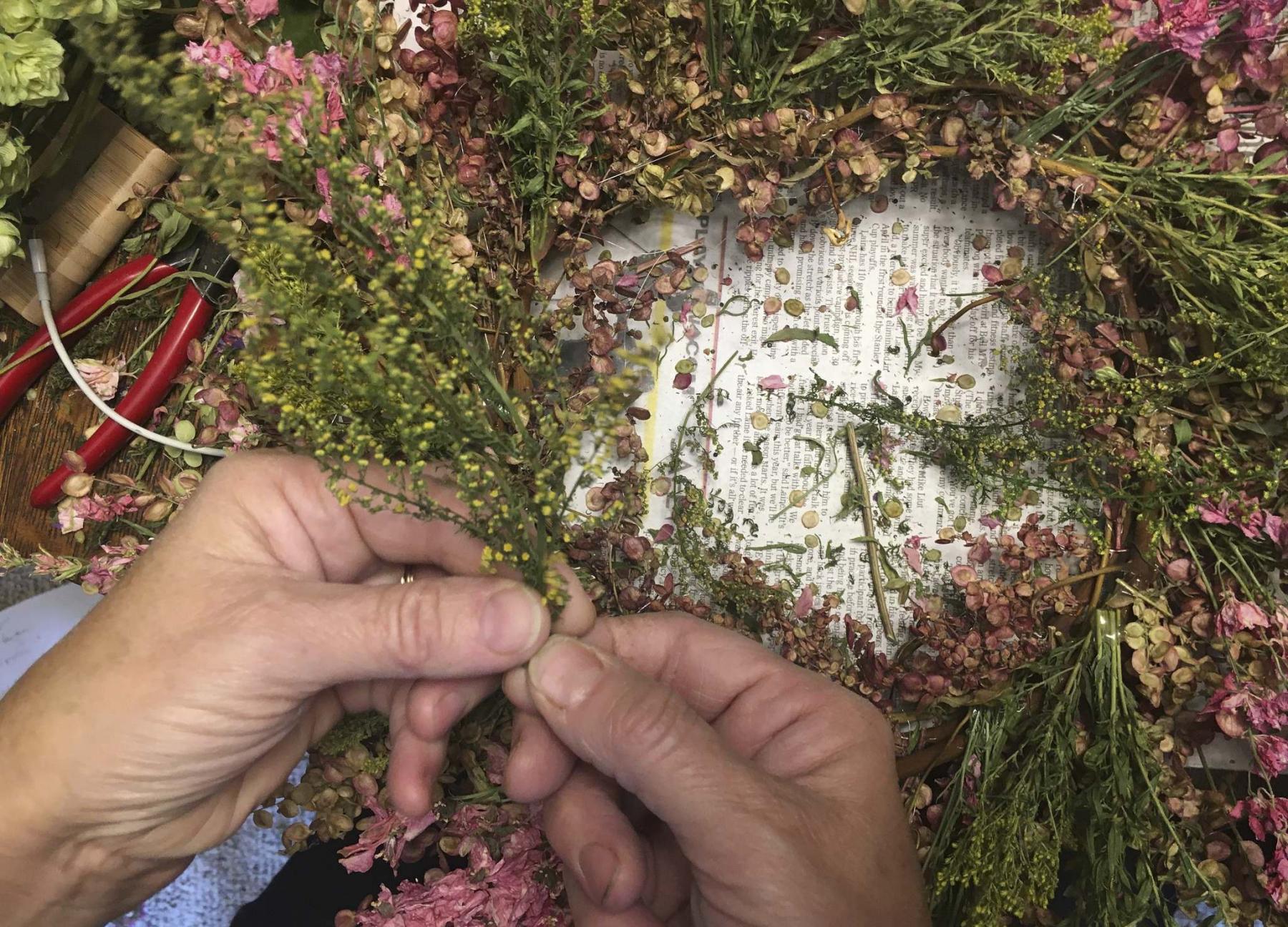
Terry Neufeld prepares to add Sweet Annie artemisia to a dried flower wreath.
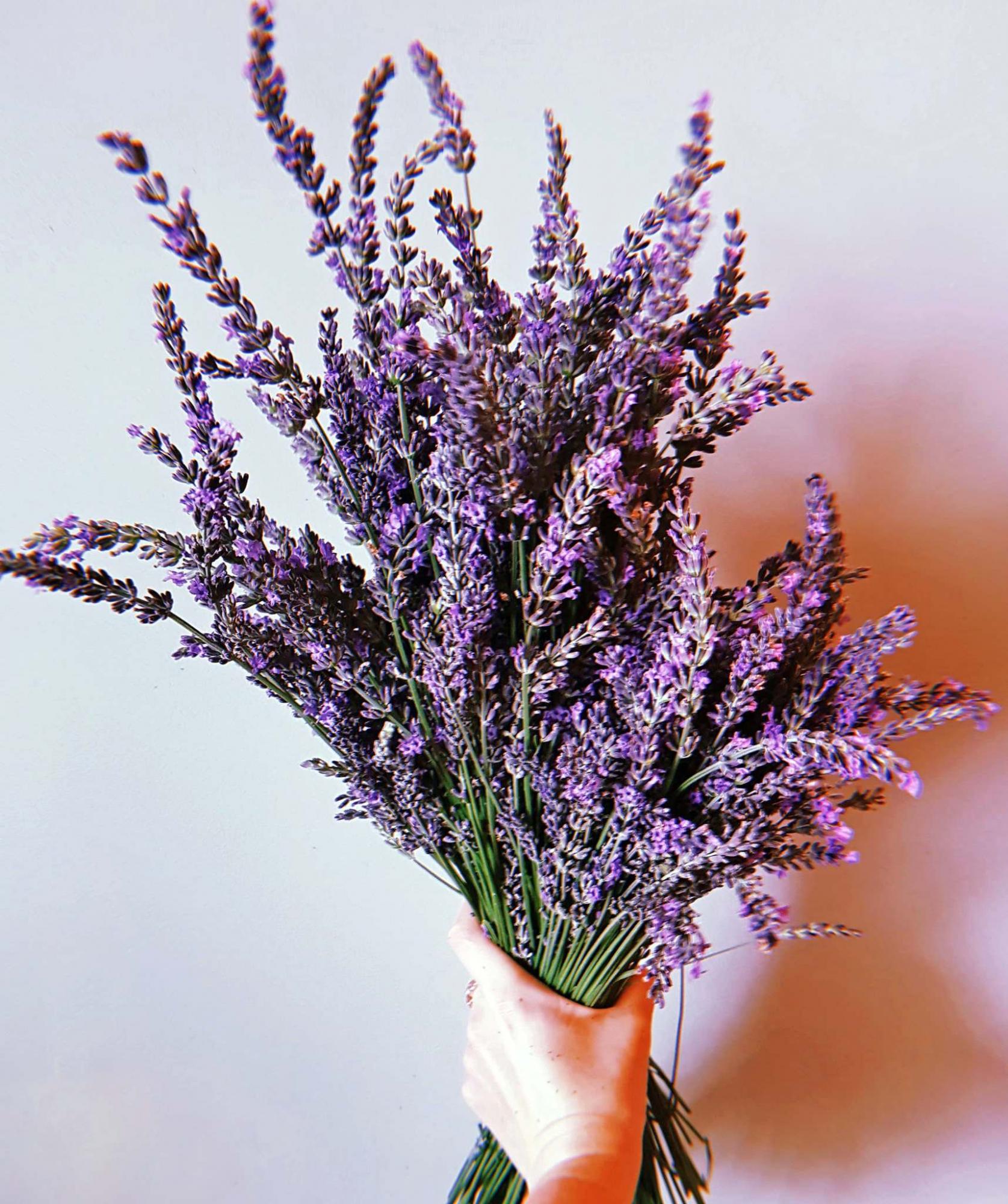
Phenomenal lavender variety is excellent for drying and making lavender bottles.
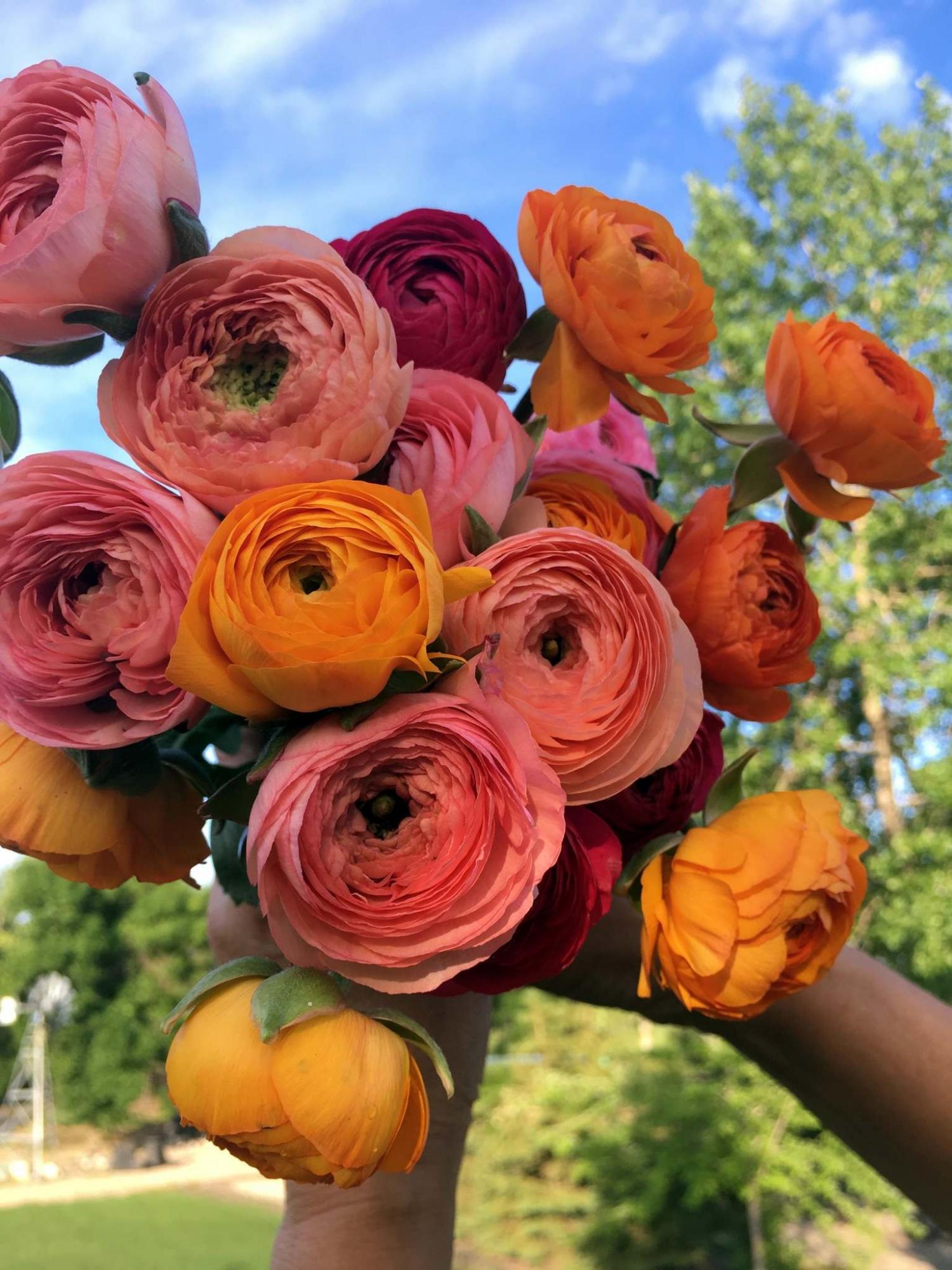
Ranunculus is beautiful in a fresh bouquet or as a dried flower.
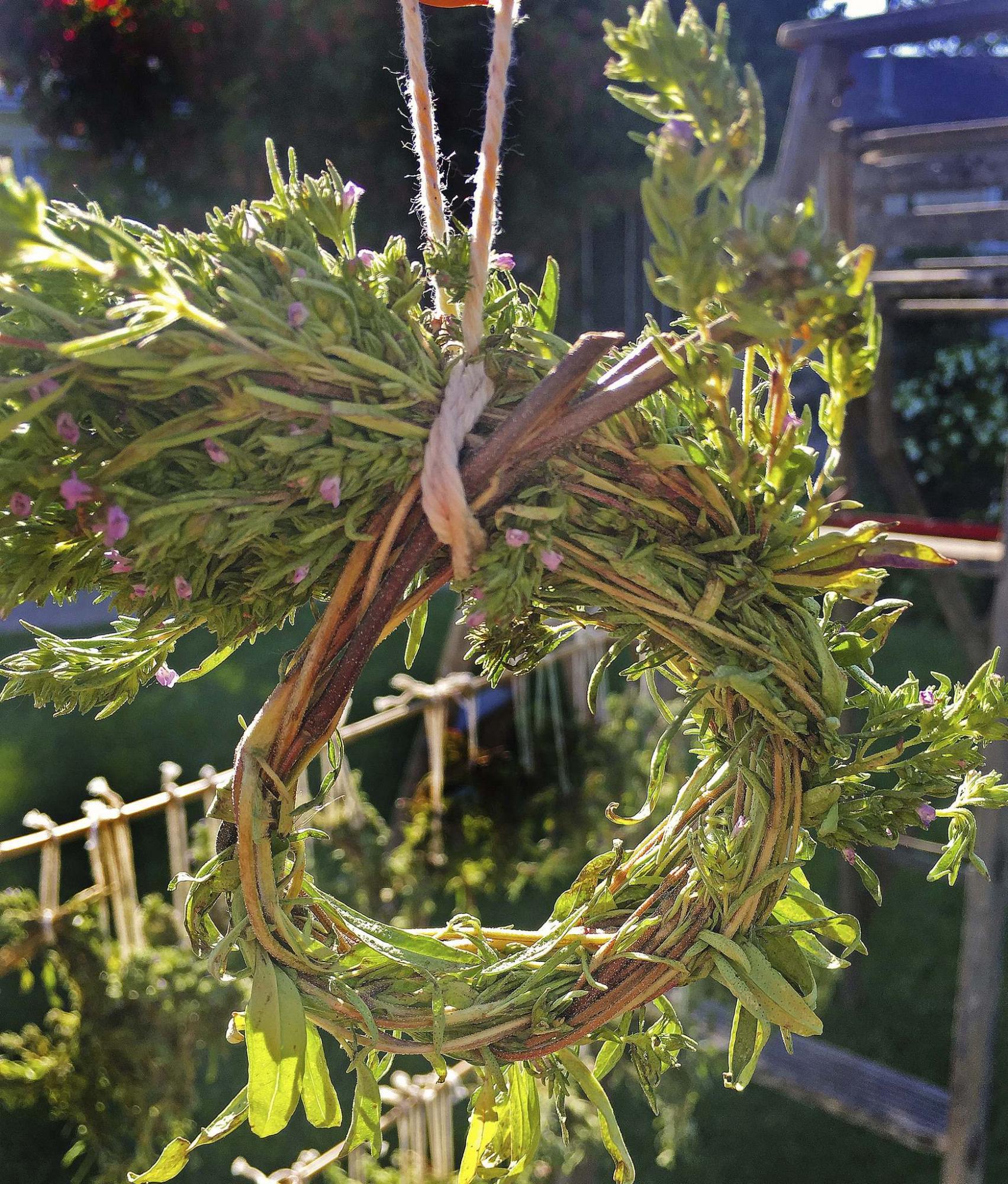
Angela Neufeld
Why not toss a summer savory soup wreath into your next recipe for delicious herbal flavour?
It was just two years ago, in 2017, when Terry Neufeld decided to become a flower farmer and launched her new business, Sweet Petals Farm. I remember walking through her 3.7-acre property, which is located minutes outside of St. Norbert, as she talked about her plans to be a cut flower grower. It was clear that Neufeld envisioned more than just raising and selling organically grown cut flowers in the restricted confines of our cold climate’s shorter growing season.
Back then, Neufeld was still working full time at the University of Manitoba. A graduate of the Prairie Horticulture certificate program, she also completed the beekeeping course offered at the U of M. A longtime vegetable and fruit grower, Neufeld invested in a couple of colonies of bees a few years ago in the hope they would improve her food and flower production. Honey production at Sweet Petals Farm — about 200 kilograms annually — has met with an enthusiastic response.
Fast-forward a mere two years after launching Sweet Petals Farm and Neufeld is no longer juggling the responsibilities of a full-time job while running a small business. Today, Sweet Petals Farm commands her full attention as it blossoms into a year-round enterprise. "Fresh flowers are seasonal in Manitoba, so small local flower farmers look for ways to extend the growing season and how to expand their business in the off-season," Neufeld says.
She’s got something there. Businesses have always looked for new ways to diversify its product lines. Now, the zero-waste mindset is leading to new opportunities for many entrepreneurs, including flower farmers. Neufeld is focused on expanding the size of her flower crops and creating new products. She doesn’t let any of her fresh flowers go to waste. Fresh flower bouquets, of course, are still the cornerstone of her business, but now she is also making dried flower wreaths, hand cream, lavender bottles and even savoury herbal wreaths for soups and stews.
The interest in cut dry flowers has grown dramatically in recent years and has everything to do with the practice of sustainable cut-flower growing. Drying flowers is easy, Neufeld says, but there is a learning curve nevertheless.
Ranunculus and lisianthus, with their rose-like blooms, are two of Neufeld’s favourite flowers. She grows both of these varieties in abundance. At the South Osborne farmers market where Terry is a vendor during the summer months, ranunculus is usually the first flower to be snapped up by her customers. She grows them in shades of pink, orange, red and purple. Any ranunculus that didn’t sell was hung up to air-dry in her basement in bundles of 15 stems. She is very pleased with how well they kept their colour, especially the darker-coloured varieties.
Neufeld says lisianthus makes a good dried flower, but mostly prefers to grow lisianthus for fresh flower bouquets. She starts all of her flowers by seed and plans to start lisianthus now, four weeks earlier than last year, so they will be ready by early August. Zinnias also dry surprisingly well, Neufeld says, but not Bells-of-Ireland, a cut flower staple with apple-green blooms that transition to bland beige when the flowers are dried.
Craspedia globosa proved to be an exceptional flower for drying, Neufeld says. Also known as the drumstick flower (or as billybuttons or woollyheads in its native country, Australia), craspedia has thin, strong, straight stems. Neufeld has plans to grow a larger quantity next year. She is also looking forward to growing Acroclineum roseum and Ammobium grandiflorum, two seed varieties she purchased from the Apocryphal Seed Company. Acroclineum are extra-large strawflowers in shades of pink, rose and white. Ammobium grandiflorum is another prolific strawflower, but has distinctly white flowers with large, showy yellow centres.
Neufeld doesn’t grow many white-flowered varieties because pollination seems to turn white somewhat yellow or grey, she says. It’s important to pick the flowers at the right stage of growth, she says, especially if they are being grown for drying. Neufeld is experimenting with several different plant varieties as fillers and foliage accents. Atriplex (also known as orache and saltbush), for example, is a textural filler with small, papery seed pods. Neufeld plans to grow a new edible variety called Copper Plume, which is available in different colours.
She likes the look and fragrance of the fern-like dark green foliage of Sweet Annie Artemisia in wreaths and mixed bouquets, but admits that it has a love-it-or-hate-it aroma. "I happen to love it," Neufeld says. She grows numerous varieties of grasses as fillers. Two favourite grass varieties, which Neufeld says are a must-have for the garden, are Panicum Sprinkles and Eragrostis Purple Love grass.
Neufeld uses grape vines as well as hops bines (they’re actually called bines) as the base for wreaths. The thick, vigorous stems of hops twist in clockwise direction. Neufeld untangles the vines, removing the broad leaves in the process but retaining some of the yellow-green flowers, and then wraps the bines around the outside of a black nursery pot to create her wreath shape.
Neufeld’s wreaths are a popular item for indoor decor and as a gift item for the holidays. Don’t display your dried flower wreath in a high-traffic area, she says. Also, dried flowers retain their colour much longer if they are not exposed to direct sunlight.
Neufeld grew summer savory this year, which she braided into wreaths or soup rings and dried on a wooden ladder. It was easy to braid the savory, she says. "The soup rings add incredible flavour to soup recipes," Neufeld says.
This year Neufeld planted a swath of lavender — more than 50 plants of a variety called Phenomenal. She dried the stems and fashioned them into fragrant wands (or bottles as they are called), bending each stem up and over the flower heads. The lavender bottle is finished with a pretty bow. Dried lavender was combined with comfrey for use in her new skin cream product that also includes beeswax from her farm.
The amount of labour now required to run Sweet Petals Farm has grown exponentially as Neufeld increases the size of her operation and diversifies her product line. She has plans to build a greenhouse and wants to become a WWOOF (World Wide Opportunities on Organic Farms) host so that she can teach others about sustainable agriculture. It will involve providing room and board for those who take part in the program.
If there’s a fly in the ointment, it might be the South Perimeter Highway Design Study. The project website at manitoba.ca/mit/hpd/pth100 shows a road that would cut through the centre of Sweet Petals Farm. After requesting a meeting with a government representative and project representatives from the engineering and consulting companies who came to tour the farm, Neufeld received a verbal assurance that the recommended design would not have to include a road through her property.
Nevertheless, Neufeld doesn’t want Sweet Petals Farm to be affected somewhere down the road, once the long-term plan for the project gets underway. She and her husband, Vic, plan to attend the open house events hosted by Manitoba Infrastructure that start next week.
colleenizacharias@gmail.com

